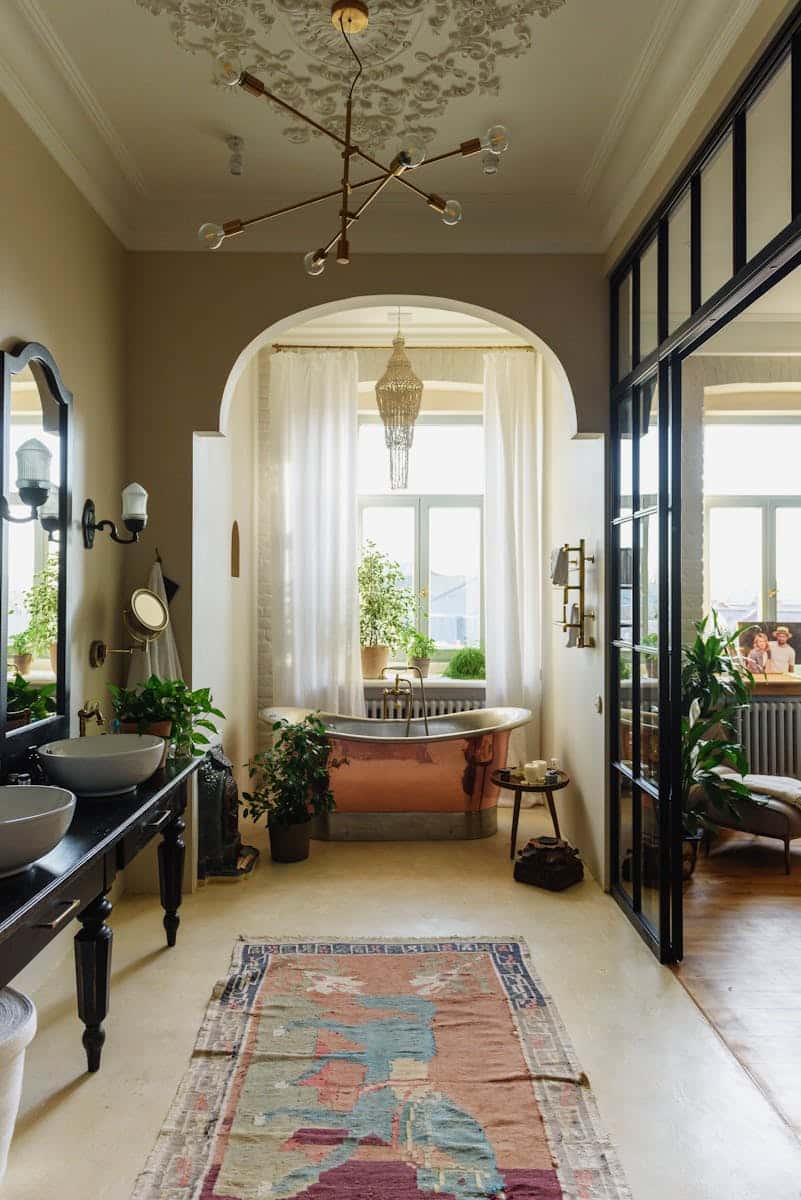There are moments in life when our inner selves whisper for stillness, for a pause, for a corner of calm amidst the busyness of everyday living. Our homes can become sanctuaries where the weight of the outside world softens, and our spirits are free to exhale. Just as we care for our bodies with nourishing food and gentle movement, cultivating a “breathing space” at home allows us to tend to our well-being on a deeper level. It is about creating places where simplicity, beauty, and tranquility are woven into daily life.
Below, we will explore how to design these calming spaces with intention: from choosing the right colors and textures, to welcoming nature indoors, and nurturing daily rituals that promote balance. Each practice serves as a reminder that our homes can hold us, support us, and offer the steady embrace we often seek.
Understanding Breathing Spaces and Why Your Home Needs One
A breathing space is not necessarily a grand design project or an entire room set aside, but rather a corner or environment where you feel safe to rest emotionally and mentally. Imagine a soft chair tucked next to a window where sunlight drapes across your lap like a warm blanket. It could be a small table cleared of clutter and devoted to a candle, a journal, and perhaps a favorite stone or shell. What matters is the intentional shift: this is a space to exhale, to pause, to breathe more deeply.
These spaces serve as antidotes to the overstimulation of daily life. Our homes can feel crowded with screens, laundry, endless reminders of unfinished tasks. Breathing spaces disrupt that constant noise and signal to your nervous system that there is a place for rest. It is not about perfection or aesthetics alone, but about creating a micro-environment that supports calm and clarity.
When we treat our home as more than functional walls and furniture, it becomes a canvas for our emotional well-being. By carving out a breathing space, you are tangibly honoring your need for rest. In time, simply walking toward that space can begin to soothe your thoughts, much like stepping into a garden or hearing a favorite melody. The very presence of a breathing space reminds us that we are worthy of calm.
Choosing Colors and Textures for Calming Home Environments
Colors influence our inner state more than we often realize. Soft, muted shades such as seafoam green, warm beige, dusty rose, and light blue tend to evoke tranquility, whereas very strong, bright tones can sometimes add energy when what we truly need is rest. Think of the hues you notice in a quiet meadow or along a serene shoreline. Bringing those tones into your home can subtly signal your body to relax and breathe more easily.
Textures are just as important as colors in shaping how a space feels. A knitted throw draped across a chair, a smooth reclaimed wood table, or linen curtains that sway gently with the breeze bring layers of sensory comfort. The tactile experience of running your hand across a woven rug or leaning against a velvet cushion creates a grounding effect that balances the senses. Your breathing space should awaken touch as a form of love and reassurance.
Combining colors and textures is about harmony rather than making grand design statements. Soft natural palettes paired with organic materials like cotton, rattan, and stone tend to create safe, welcoming environments. As you choose what belongs, let your body’s reactions guide you. Which colors bring warmth to your emotions? Which fabrics make you smile? Trust those signals to shape your haven.
Bringing Nature Indoors to Design Peaceful Breathing Spaces
Nature has a way of restoring balance that no modern gadget can replicate. Incorporating plants into your breathing space instantly shifts energy. A leafy fern or a vibrant peace lily becomes more than just decoration—it becomes a living companion, quietly cleaning the air and reminding you of life’s gentle rhythms. Even a single vase of freshly cut wildflowers has the power to soften a room’s atmosphere and brighten your spirit.
Natural light is another essential element. Positioning your breathing space near a window allows you to experience changing skies, hear birdsong in the morning, and feel the warmth of sunlight. If natural light is limited, opt for soft, warm-toned lamps that imitate the glow of sunrise or candlelight. These small touches restore the sense of living in harmony with the rhythms of nature.
Beyond plants and light, natural textures and fragrances can enrich your breathing corner. Stones collected from a beach walk, driftwood, or small bowls of pinecones carry stories from the earth into your home. Essential oils such as lavender, cedarwood, or eucalyptus can anchor your spirit gently. With nature as a design partner, your breathing space becomes not just four walls but a sanctuary that whispers of meadows, forests, and oceans.
Daily Rituals to Nurture Calm and Balance Within Your Haven
Even the most beautifully designed breathing space needs your presence to come alive. Establishing simple daily rituals within this sanctuary helps weave calm into the fabric of your life. Perhaps each morning you light a candle, close your eyes, and take three slow breaths before the rush of the day begins. Or in the evening, you sip tea beneath a soft blanket, letting your body unwind as soothing scents fill the air.
Journaling, meditation, or simply sitting in silence can provide structure for your breathing space rituals. What matters most is consistency. Returning to the same practice day after day teaches your body and mind to recognize this space as a signal for stillness. Over time, rituals transform from tasks into cherished moments of presence, much like a trusted friend you can return to.
These small practices remind you that rest and restoration are not luxuries, but necessities. In cultivating daily rituals, you are offering yourself a steady anchor amidst life’s uncertainties. Your breathing space becomes not just a corner in your home, but a reflection of your inner sanctuary, always ready to hold you in moments of need.
Creating a breathing space at home is far more than arranging furniture or decorating with plants. It is about honoring the human need for softness, serenity, and stillness in the midst of a hurried world. These spaces anchor us in the present, reminding us that peace begins where we are, with what we already have.
By choosing colors and textures that soothe, bringing in touches of nature, and practicing simple daily rituals, you design not just a space, but a rhythm of care for your spirit. A breathing space is your invitation to pause, to step back into yourself, and to remember that your home is not only a shelter, but a sanctuary.
Let this be your gentle encouragement to carve out a space where your soul feels held. In doing so, you give yourself permission to exhale fully, to restore balance, and to live more tenderly within your own haven.



